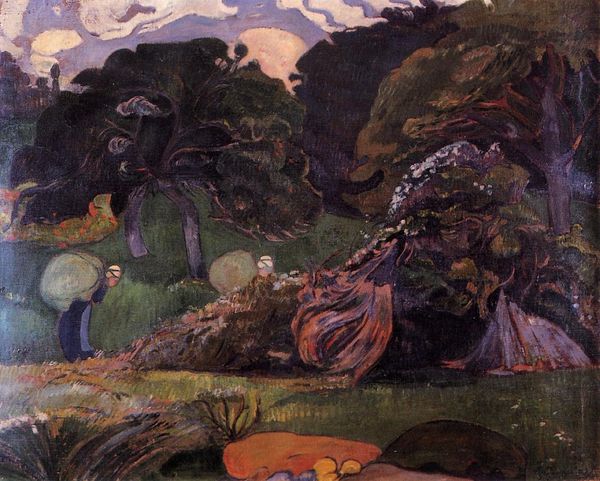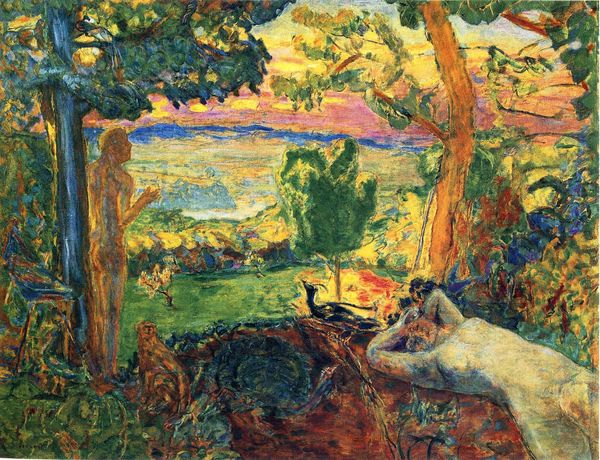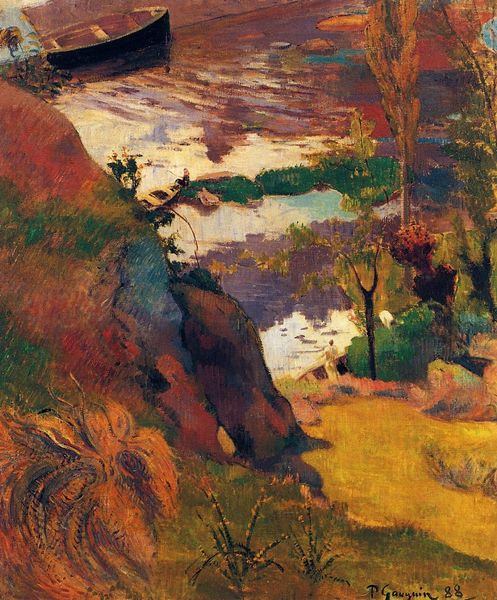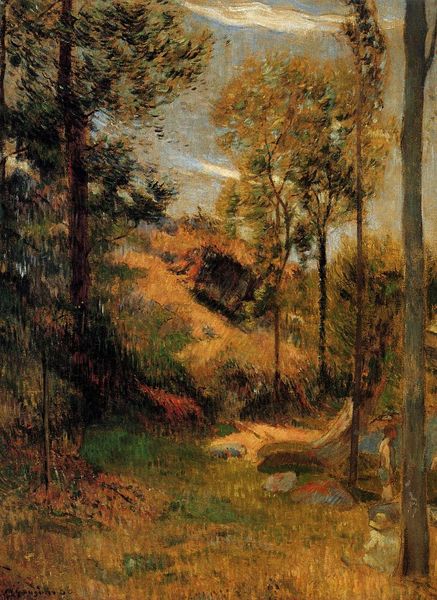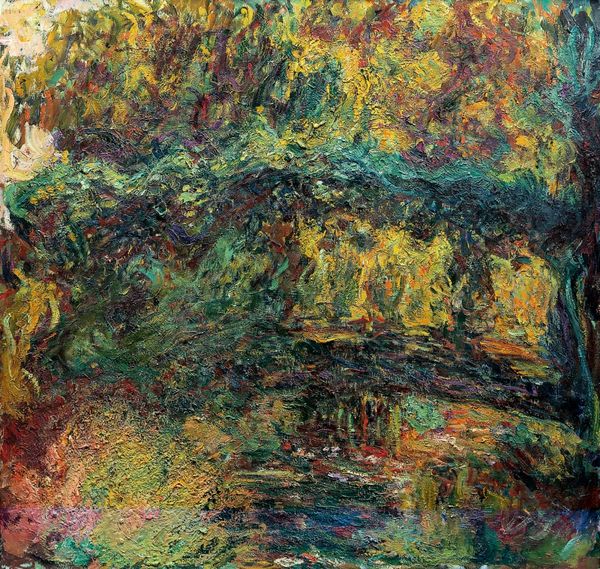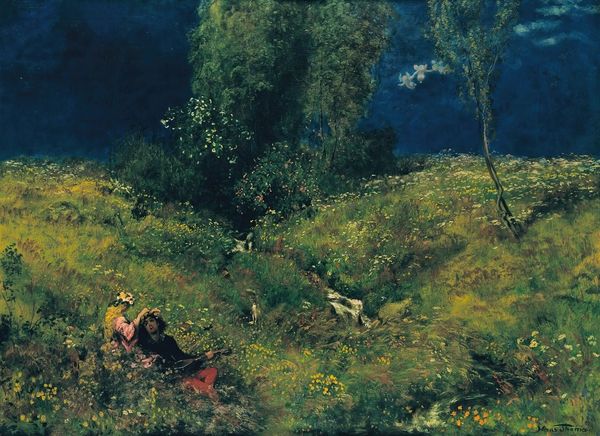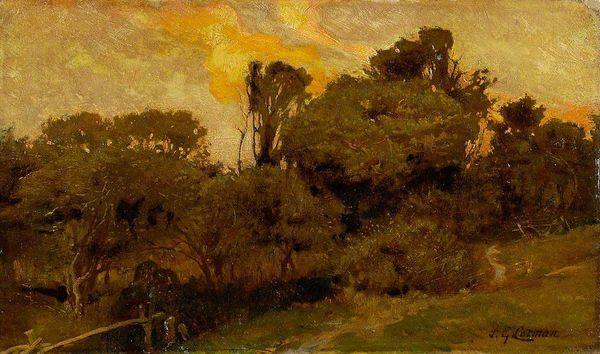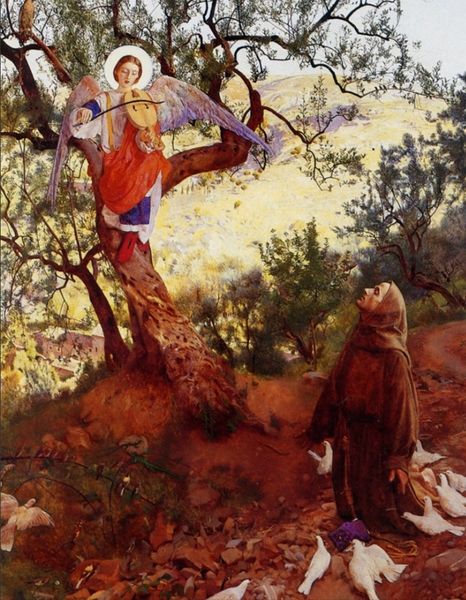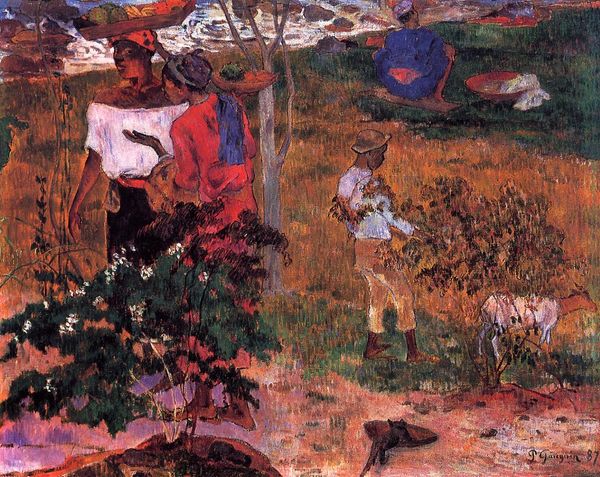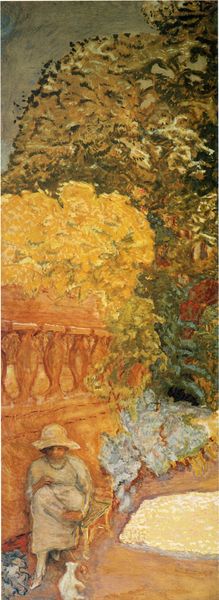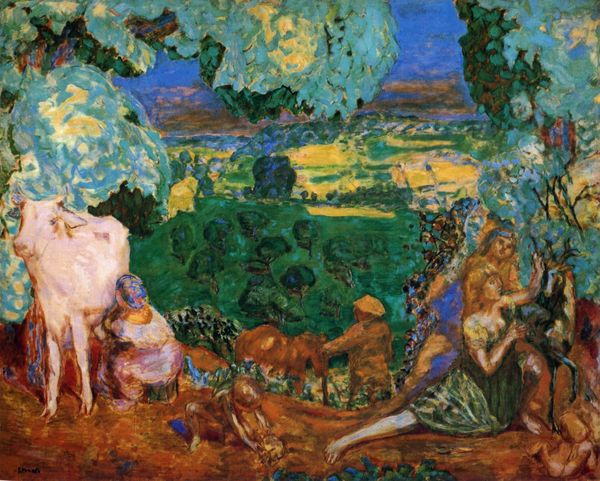
painting, oil-paint
#
portrait
#
painting
#
oil-paint
#
landscape
#
figuration
#
oil painting
#
child
#
post-impressionism
Copyright: Public domain
Paul Gauguin’s "Breton Boy by the Aven River" is a painting where landscape and figure are interwoven through colour and form. The eye is immediately drawn to the contrast between the dark, earthy tones of the foreground and the lighter, more ethereal blues and whites of the river Aven in the background. Gauguin destabilizes traditional perspective by flattening the picture plane and using blocks of colour to define shapes. Notice how the artist merges the boy with his natural surroundings through muted shades, embedding him within the Breton landscape. This treatment rejects academic traditions, hinting instead at Gauguin's later primitivist explorations. This move towards simplification and the use of non-naturalistic colour is not merely an aesthetic choice, it's a challenge to the established conventions of representation, and a reflection of Gauguin's broader project to reinvest painting with symbolic and emotional depth. The way Gauguin uses formal elements like color and composition reflects the ongoing cultural dialogue about art's role in representing reality versus evoking inner experience.
Comments
No comments
Be the first to comment and join the conversation on the ultimate creative platform.
